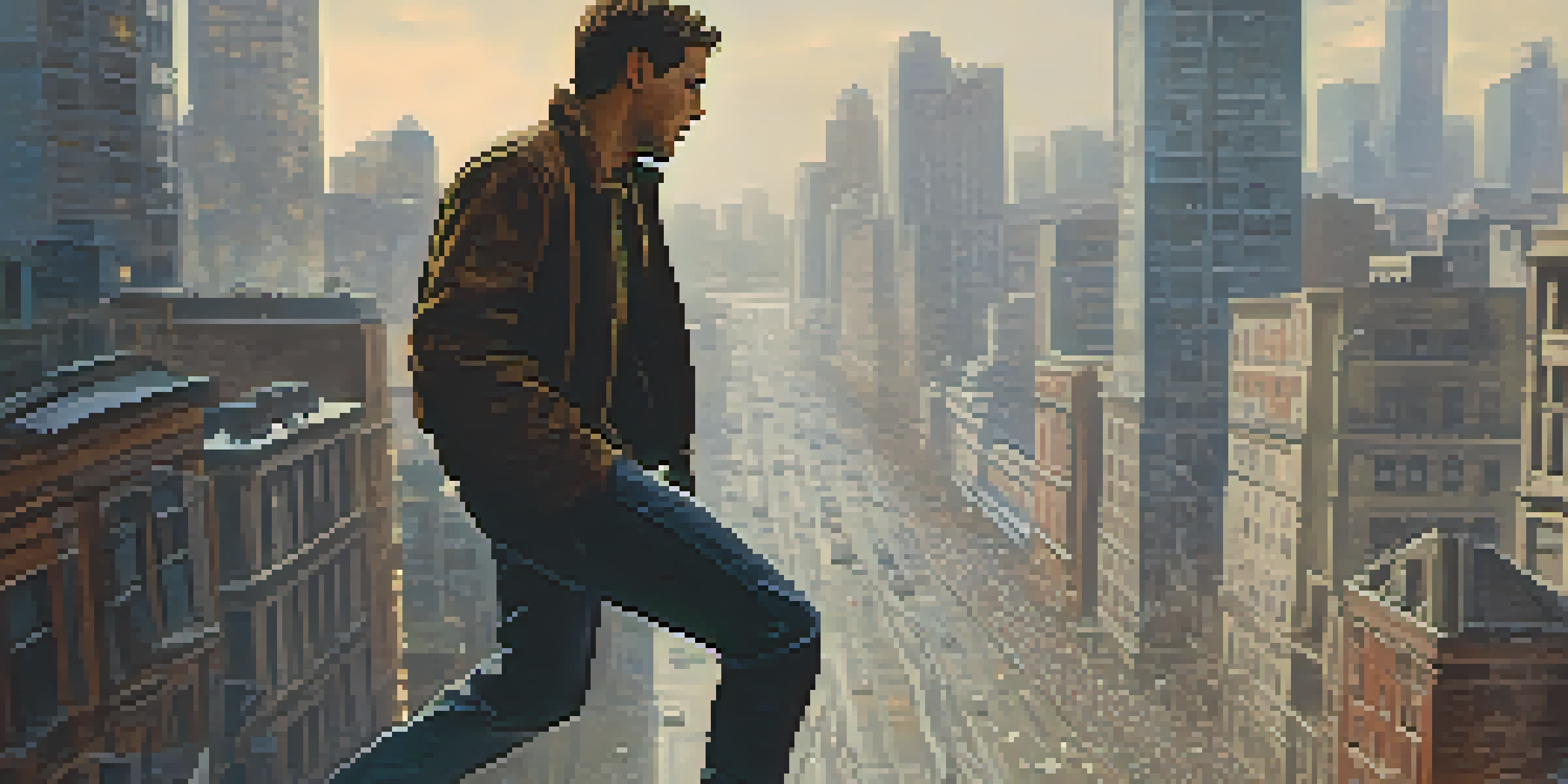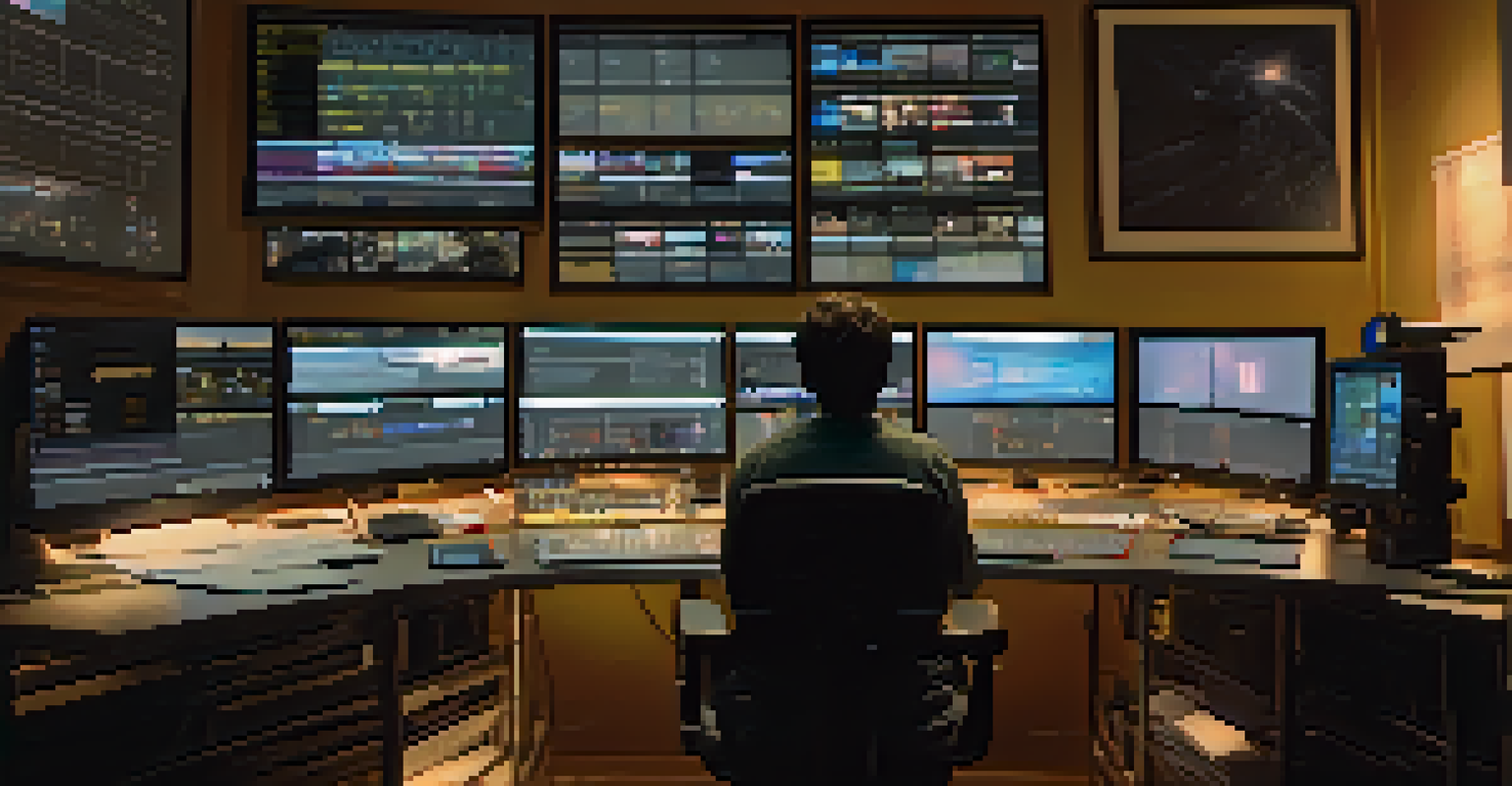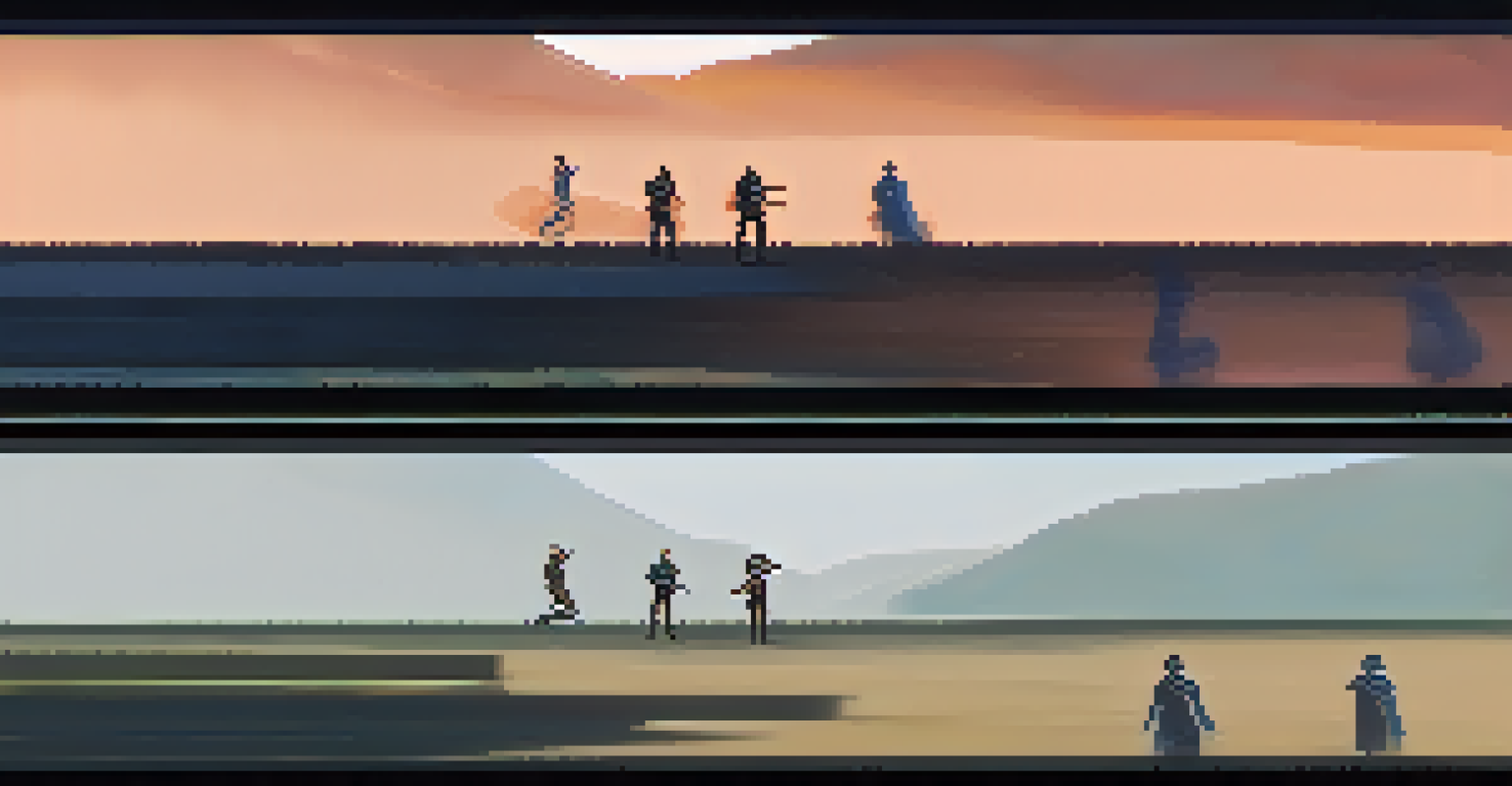Jump Cuts: Disrupting Time and Enhancing Emotional Impact

Understanding Jump Cuts: A Brief Overview
Jump cuts are a powerful editing technique used in filmmaking to create a noticeable transition in time or space. Essentially, they involve cutting from one shot to a similar shot but with a shift in time, allowing the audience to experience events in a non-linear fashion. This technique can evoke a sense of urgency or highlight key moments in a story.
Jump cuts are not just a technique; they are a way of expressing the emotional truth of a moment.
While jump cuts may seem jarring at first, they can be incredibly effective when used intentionally. Think of them as a way to compress time, similar to how a time-lapse video condenses hours into seconds. This allows filmmakers to maintain the audience's interest and keep the narrative flowing without losing momentum.
A classic example of jump cuts in action is the iconic film 'Breathless' by Jean-Luc Godard. The film’s use of jump cuts broke conventional storytelling molds and introduced viewers to a new way of experiencing cinema, demonstrating how this technique can enhance emotional engagement.
The Emotional Weight of Jump Cuts
Jump cuts are not just about disrupting time; they also serve to enhance emotional impact. By strategically placing these cuts, filmmakers can draw attention to a character's feelings or reactions. For instance, a sudden jump cut to a character's distressed face can amplify the audience's connection to their emotional state.

This technique allows viewers to experience the characters' internal struggles more vividly. As the narrative shifts quickly between moments, it mirrors the chaotic nature of human emotions, making the audience feel what's at stake. It’s like flipping through a photo album of memories, where each image evokes a different feeling.
Jump Cuts Enhance Emotional Impact
By strategically using jump cuts, filmmakers can amplify emotional moments and create a deeper connection with the audience.
Consider how jump cuts are used in scenes of conflict or tension. By cutting away from a heated dialogue or a pivotal moment, filmmakers can create a sense of anticipation and heighten emotional stakes, leaving the audience on the edge of their seats.
Jump Cuts in Popular Media: A Case Study
One of the best examples of jump cuts in popular media can be found in the TV show 'The Office.' The series often employs jump cuts to capture characters' reactions during interviews, creating a comedic effect that resonates with viewers. These abrupt transitions add a layer of humor and relatability, as audiences see the characters' thoughts laid bare.
In film editing, a jump cut is like a leap of faith; it challenges the audience to embrace the unexpected.
By using jump cuts, 'The Office' manages to convey a wealth of emotion and humor within a short span. The technique allows for quick shifts in tone, making each moment feel fresh and engaging. It's a brilliant example of how editing can shape the viewer's emotional experience.
Moreover, jump cuts serve to reinforce character dynamics, as the audience is privy to each character's perspective through these quick transitions. This technique not only enhances the storytelling but also fosters a deeper connection with the audience, making them feel invested in each character's journey.
The Art of Timing: Mastering Jump Cuts
Timing is everything when it comes to jump cuts. A well-placed jump cut can create suspense or humor, while a poorly timed one can confuse or disengage the audience. Filmmakers must carefully consider the rhythm of their storytelling to ensure that each cut serves a purpose.
Think of timing in jump cuts like the beat in a song; it sets the mood and influences how the audience feels. Just as a sudden drumbeat can heighten excitement, a jump cut can inject energy into a scene. This balance between pacing and emotional resonance is crucial for maintaining viewer interest.
Timing is Crucial for Effectiveness
Proper timing of jump cuts is essential, as it influences the narrative's rhythm and the emotional response of viewers.
Ultimately, mastering jump cuts involves understanding the emotional arcs of the story. By aligning the cuts with the characters’ emotional journeys, filmmakers can create a cohesive narrative that resonates deeply with audiences.
Common Mistakes with Jump Cuts
While jump cuts can be incredibly effective, they can also lead to confusion if overused or misapplied. One common mistake filmmakers make is using jump cuts excessively without a clear purpose, which can disorient viewers and detract from the story. It's important to use this technique sparingly and strategically.
Another pitfall is failing to maintain continuity between shots. If the emotional tone or visual elements shift too drastically, it can break the audience's immersion in the narrative. Just as a sudden loud noise can pull you out of a quiet moment, an ill-timed jump cut can disrupt the flow of a scene.
To avoid these mistakes, filmmakers should always consider the overall impact of their editing choices. A thoughtful approach to jump cuts can enhance the story, while careless use can leave audiences scratching their heads.
The Future of Jump Cuts in Filmmaking
As technology continues to evolve, so does the potential for jump cuts in storytelling. With the rise of social media and platforms like TikTok, quick cuts have become a staple in modern content creation. This trend shows no signs of slowing down; audiences are increasingly accustomed to fast-paced narratives that keep them engaged.
Filmmakers are finding innovative ways to incorporate jump cuts into their work, expanding the boundaries of traditional storytelling. This evolution creates opportunities for unique emotional experiences, allowing creators to experiment with pacing and timing in ways that resonate with today’s audiences.
Common Mistakes to Avoid
Overusing jump cuts or failing to maintain continuity can confuse viewers and detract from the storytelling experience.
Ultimately, the future of jump cuts in filmmaking will continue to be shaped by audience preferences and advancements in technology. As filmmakers push creative boundaries, jump cuts will likely remain a vital tool for enhancing emotional impact and capturing the essence of storytelling.
Conclusion: Embracing the Power of Jump Cuts
Jump cuts are more than just a trendy editing technique; they are a powerful tool for shaping narratives and evoking emotions. By disrupting time and creating unexpected transitions, filmmakers can engage audiences in ways that traditional cuts simply cannot. The emotional depth that jump cuts provide can transform a simple story into an unforgettable experience.
As we’ve explored throughout this article, the effectiveness of jump cuts lies in their intentional use. When applied thoughtfully, they can enhance storytelling, emphasizing crucial moments and character dynamics. This technique invites viewers to connect with the emotional core of the narrative.

In a world where attention spans are shorter than ever, mastering the art of jump cuts can set creators apart. By embracing this dynamic editing style, filmmakers can keep their audiences captivated, ensuring that their stories resonate long after the credits roll.